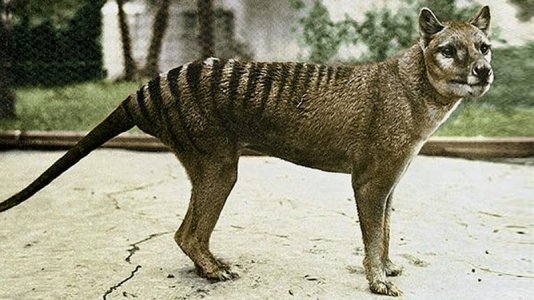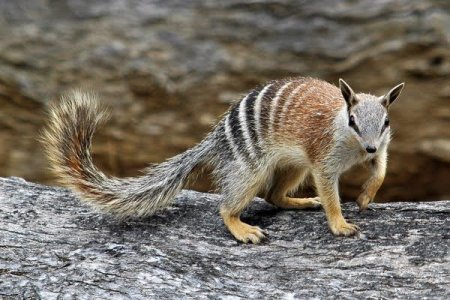Australian History
Thursday, November 30, 1854.  eter Lalor is elected to lead the gold-diggers in the movement that would become the Eureka Stockade.
eter Lalor is elected to lead the gold-diggers in the movement that would become the Eureka Stockade.
The Eureka Stockade was the 1854 miners' uprising on the goldfields of Ballarat, Victoria, Australia. Peter Lalor was an Irish immigrant, born on 5 February 1827, who initially worked on the construction of the Melbourne - Geelong railway line, but soon joined the gold rush and began mining in the Ovens Valley, and then in Ballarat.
Conditions on the Australian goldfields were already harsh, with many people squeezed into over-crowded dustbowls on the fields, and competition was rife for the best diggings. Over-priced goods and equipment from traders, coupled with the excessively high cost of mining licences, exacerbated discontent and unrest, particularly when miners were subjected to frequent, surprise checks of their licences. Previous delegations for miners' rights had met with resistance from the Victorian government, so on 30 November 1854, Lalor was elected as a more militant leader. The result was the Eureka Stockade (see December 3).
Saturday, November 30, 1878. : Advance Australia Fair, the song that would become Australia's National Anthem over a century later, is performed for the first time in public.
'Australians, all, let us rejoice, for we are young and free.'
This is the well-known opening line of Australia's national anthem, 'Advance Australia Fair'. The song was composed by Scottish-born composer Peter Dodds McCormick, who arrived in Sydney in 1855, taking up a position as a public school teacher in New South Wales. McCormick was heavily involved in the community as well as the Scottish Presbyterian church, and he developed a reputation for both his singing voice and his compositions. He composed around 30 patriotic songs, one of which was 'Advance Australia Fair'. 'Advance Australia Fair' was first performed in public on 30 November 1878. The occasion was the St Andrew's Day concert of the Highland Society. Initially, the song was published under the pseudonym of "Amicus", which is Latin for 'friend'.
In line with its nationalistic flavour, 'Advance Australia Fair' was performed by a 10,000-voice choir at the inauguration Federation ceremony for the proclamation of the Commonwealth of Australia, on 1 January 1901. McCormick was subsequently paid one hundred pounds for his composition in 1907, and he registered it for copyright in 1915. Early in the twentieth century, the song was proposed as a possible national anthem for Australia, to replace the Royal anthem 'God Save the King' (later 'Queen'), but no official decision was made.
The first of many competitions to find a new national anthem was held in 1840, with subsequent quests and competitions in ensuing years, including the lead-up to the 1956 Melbourne Olympics. Another Australia-wide national anthem quest was held in 1972-3. Following this, in 1977, the government held a referendum and attached a national plebiscite to choose a new anthem. 'Advance Australia Fair' won with 43% against Banjo Paterson's 'Waltzing Matilda' with 28% and Carl Linger's 'Song of Australia' with 10%. In favour of keeping 'God Save the Queen were 19%. In 1984, the Australian government made the final decision to change the national anthem as it sought to reinforce its independence from England. 'Advance Australia Fair' was adopted as the National anthem of Australia on 19 April 1984.
Tuesday, November 30, 1920. : The first south to north transcontinental flight across Australia occurs.
The first Australian to demonstrate that man could fly was Lawrence Hargrave, who was born in England in 1850, but emigrated to Australia in 1865. Hargrave invented the box kite in 1893, and used it to further his aerodynamic studies. In November 1894, Hargrave linked four of his kites together, added a sling seat, and flew about five metres in the air on a beach near Wollongong, New South Wales. In doing so, he demonstrated that it was possible for man to build, and be transported in, a safe and stable flying machine. His radical design for a wing that could support far more than its own weight opened up opportunities for other inventors to develop the design for commercial purposes.
In 1919, the first south to north transcontinental flight was undertaken in Australia. Captain Henry Wrigley and Sergeant Arthur Murphy flew a B.E.2E aircraft from Point Cook, Victoria to Darwin in the Northern Territory. It took the pair 46 flying hours to cover the 2,500 miles (4023 km).
A year later, the first east to west transcontinental flight in Australia was made. On 30 November 1920, a converted World War I bomber, an Airco DH.4, piloted by Captain Francis S Briggs and J Howard departed Melbourne. On board was also the aircraft's owner, Clement John de Garis, who wished to inspect a property he had purchased at Kendenup in Western Australia. The flight took 18 hours, and arrived in Perth on 2 December.
Friday, November 30, 1928. : Australian cricket icon Donald Bradman makes his Test debut.
Donald George Bradman was born on 27 August 1908 in Cootamundra, New South Wales, Australia. One of Australia's most popular sporting heroes, he is often regarded as the greatest batsman of all time. The Bradman Museum and Bradman Oval are located in the New South Wales town of Bowral, where Bradman grew up, spending many an hour practising his cricket using a stump and a golf ball. Bradman developed his legendary split-second speed and accuracy by practising hitting into a water tank on a brick stand behind the Bradman home: when hit into the curved brick stand, the ball would rebound at high speed and varying angles. Bradman's batting average of 99.94 from his 52 Tests was nearly double the average of any other player before or since.
Bradman was drafted in grade cricket in Sydney at the age of 18. Within a year he was representing New South Wales. On 30 November 1928, Bradman made his Test debut, when he scored 18 runs and 1 run against England. Less than two years later, in the English summer of 1930, he scored 974 runs over the course of the five Ashes tests, the highest individual total in any test series. Even at almost forty years of age - most players today are retired by their mid-thirties - Bradman returned to play cricket after World War II. On 12 June 1948, he scored 138 in the First Test Cricket at Trent Bridge. In his farewell 1948 tour of England the team he led, dubbed "The Invincibles", went undefeated throughout the tour, a feat unmatched to date.
Bradman was awarded a knighthood in 1949 and a Companion of the Order of Australia, the country's highest civil honour, in 1979. In 1996, he was inducted into the Australian Cricket Hall of Fame as one of the ten innaugural members. After his retirement, he remained heavily involved in cricket administration, serving as a selector for the national team for nearly 30 years. Sir Donald Bradman died on 25 February 2001.
Australian Explorers
Wednesday, November 30, 1831. : Sir Thomas Mitchell sets out to investigate rumours of a vast river allegedly flowing north from New South Wales.
Major Thomas Mitchell was born in Craigend, Scotland, in 1792. He came to Australia after serving in the Army during the Napoleonic Wars, and took up the position of Surveyor-General of New South Wales. He undertook four expeditions into the NSW interior. Mitchell's first expedition was to investigate rumours of a north-flowing river situated in northern New South Wales. An escaped convict by the nickname of Clarke the Barber was spawning reports of a great river, which he named the Kindur. Setting off from the Hunter River on 30 November 1831, Mitchell came across numerous rivers, but they all flowed in a westerly direction, rather than north. After several months it became apparent that Clarke had fabricated the story, hoping for leniency upon his recapture.
Born on this day
Monday, November 30, 1835. : American author and satirist, Mark Twain, is born.
American writer Mark Twain was born Samuel Langhorne Clemens on 30 November 1835, in Florida, Missouri. His birth was marked by the appearance of Halley's Comet, a phenomenon which reappeared at the time of his death, some 75 years later. Clemens grew up in Hannibal, Missouri, and later worked as a licensed Mississippi river-boat pilot.
Writing from a mixture of experience and imagination, the pseudonym 'Mark Twain' was spawned in 1861 when he signed a humorous travel account with that name. He acquired this name as a result of his time as a boat pilot, when a boatman's call would announce "Mark twain", meaning that the river was only two fathoms deep, the minimum depth for safe navigation.
Twain is best known for stories such as "The Adventures of Tom Sawyer" (1876), "The Prince And The Pauper" (1881), "Adventures of Huckleberry Finn" (1884), "A Connecticut Yankee in King Arthur's Court" (1889) and "The Tragedy of Pudd'nhead Wilson" (1894). As well as short stories, speeches, and essays, he penned some autobiographical works, including "The Innocents Abroad" (1869), "A Tramp Abroad" (1880), "Life on the Mississippi" (1883), and "Mark Twain's Autobiography." He continued writing under the pseudonym of Mark Twain until his death in 1910.
Monday, November 30, 1874. : Winston Churchill, British Prime Minister during WWII, is born.
Winston Leonard Spencer Churchill was born on 30 November 1874, at Blenheim Palace in Oxfordshire, England. He served with the British Army in India and Sudan, and became nationally known through his writings when, as a journalist, he was captured in South Africa during the Boer War. Churchill became a member of Parliament in 1900, remaining an MP for over 64 years.
Churchill served as Prime Minister of Britain from 1940-45, during WWII. His powerful oratory and refusal to make peace with Hitler were instrumental in rallying and maintaining British resistance to Germany. This was particularly so during the first two years of the war and the onslaught of the Blitz by the German Luftwaffe, which was aimed at crushing Bitish morale. Initially, Britain stood alone against Nazi Germany, but Churchill promised his country and the world that the British people would "never surrender". His government was defeated shortly after the war ended, but he was re-elected in 1951. In 1953 Churchill was knighted, and awarded the 1953 Nobel Prize in Literature for his four-volume work, "A History of the English-speaking Peoples". He retired as Prime Minister in 1955 but remained in Parliament until 1964. A year later, on 24 January 1965, Churchill died and was laid to rest in the Oxfordshire parish churchyard of Bladon.



